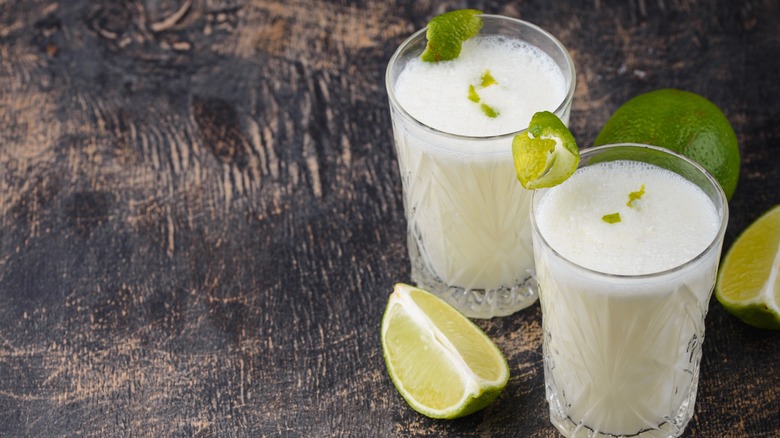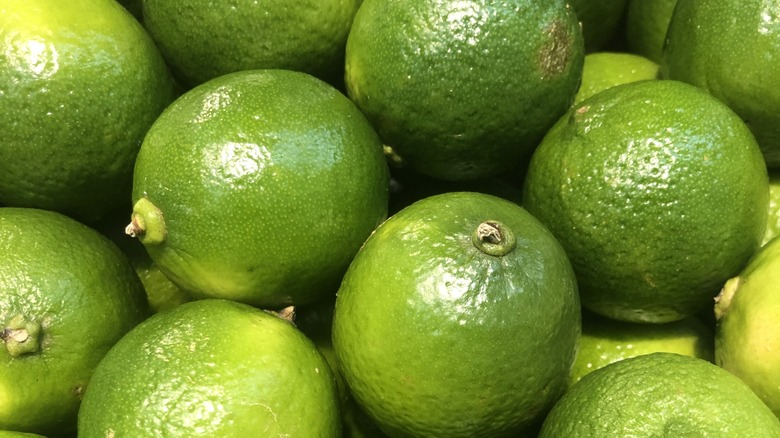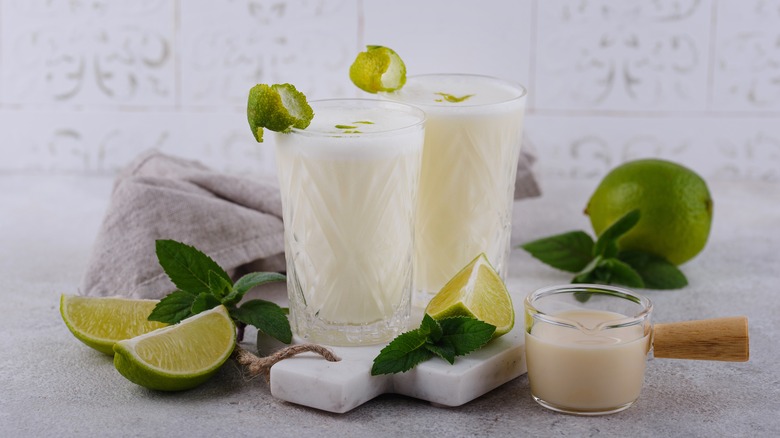Swiss Lemonade Vs. Brazilian Lemonade: What's The Difference?
We may receive a commission on purchases made from links.
When you go down the "Brazilian/Swiss lemonade" rabbit hole, it's easy to get lost. We bet that's a sentence you never thought you'd read, but if you're a lemonade aficionado, you might know what's coming.
First, don't confuse real Swiss Lemonade with that gallon jug you find at Walmart. The lemonade we are talking about is something you'll be making yourself. Next, you'll realize it's not technically Swiss. It is, however, very Brazilian. Most frustratingly, it's missing a seemingly key ingredient. Whether you call it Swiss or Brazilian, this is a great change of pace for lemonade lovers.
Lemonade is a sweet and simple recipe. Take some lemon juice, add enough water to take off the acidic edge, round it out with plenty of sugar, then enough ice to cool you off. Lemonade has been refreshing us since at least ancient Egypt. As this beverage spread, it evolved. In 17th-century France, it was served with carbonated water. In the U.S., it fueled the circus craze of the late 19th and early 20th centuries. On a side note, the origin of pink lemonade is up for some debate between a happy accident with cinnamon candy, or some red-tinted wash water.
It's safe to assume that the origin of Brazilian, or Swiss lemonade isn't as troubling. But, that name is every bit as murky as a tub of wash water.
Swiss lemonade isn't Swiss
This YouTube short on Swiss lemonade from The Golden Balance, and the ensuing responses, like this one from Nick DiGiovanni, have been viewed, liked, and commented on a lot. The drink looks to be incredibly refreshing and is made with a unique technique and an unexpected ingredient — lime. In fact, the entire lime, not just the juice. And the sweetener comes from a big dose of dairy, in the form of sweetened condensed milk. But, where are the lemons, and what about that name?
House of Nash Eats points out that the Portuguese word for both lemon and lime is limão. So, we suppose "lemonade" isn't that confusing after all. However, "Swiss" is harder to explain.
According to Tasteatlas, that designation is supposedly rooted in the drink's Swiss restaurateur inventor. It could have actually been a culinary school run by a Swiss chef. A drink with this much character and zesty excitement deserves a better origin story. There are many that think the name has more to do with the can of sweetened condensed milk than anyone from Switzerland. Cans of Nestle sweetened condensed milk had, and still do in some markets, a Swiss milkmaid on the label. This may likely be the source of the "Swiss" part of Brazil's Swiss lemonade.
The best Swiss lemonade requires minimal blending
There are many ways to upgrade the flavor of citrus-ades. Adding zest is always a great way to enhance citrus juice. One recipe for "State Fair" Lemonade on YouTube does just that. Or, you can enlist your oven for a hack that will make your lemonade even better.
Tossing the entire thing into the blender is as simple as it gets to take full advantage of a lime. That mixture will have all of the lime juice's acidity, the potent essential oils in the zest, and some bitter complexity from the pith. Sweetened condensed milk's fat, sweetness, and dairy flavor is the perfect foil. Brazilian Kitchen Abroad provides a recipe and points out a common pitfall. The longer the lime is blended, the more bitter it will become. They recommend no more than a 15-second blend before it's ready to go.


